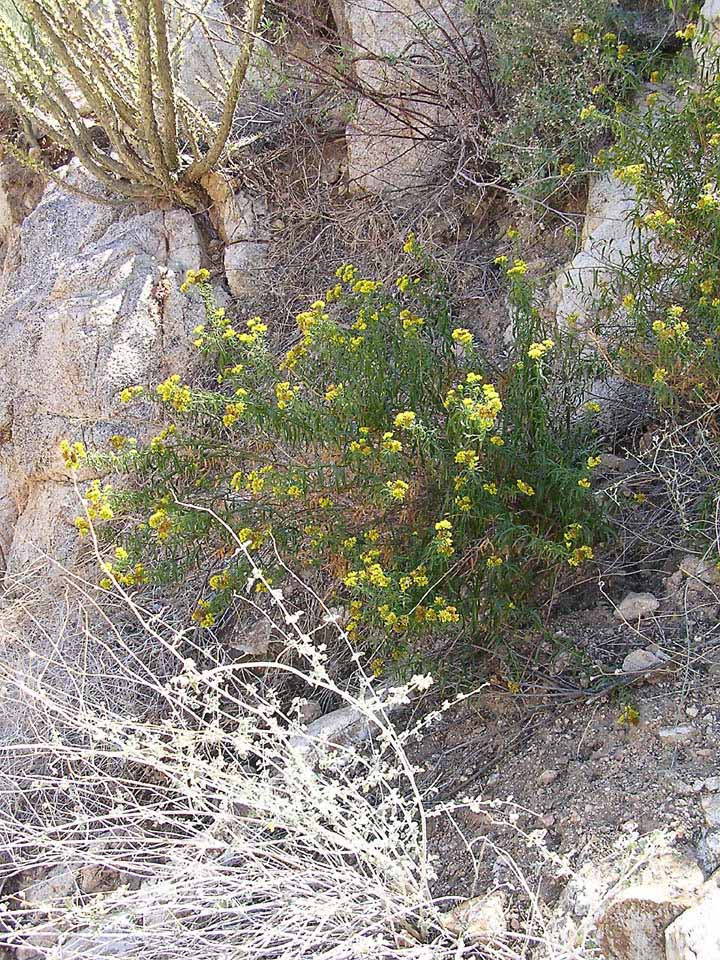
|
Family: Asteraceae |
Shrubs, 50-150(-200) cm (glabrous, heavily resinous; taprooted). Stems erect, branched. Leaves cauline; alternate; sessile; blades (1- or 3-nerved, parallel in wider blades) linear to narrowly lanceolate, oblanceolate, or elliptic (bases decurrent), margins entire (minutely papillate-ciliolate, apices often recurving or slightly falcate), faces gland-dotted (in pits). Heads radiate, (sessile to subsessile) in compact glomerules, in terminal, corymbiform arrays. Involucres cylindro-turbinate to elliptic-obovoid, (3-3.8 ×) 1.5-2 mm. Phyllaries 7-12 in 2-4 series, 1-nerved (midveins not evident; convex) ovate to lanceolate, unequal, mostly completely whitish indurate, outer sometimes faintly green at tips, margins scarious, abaxial faces glabrous. Receptacles flat, pitted (glabrous), epaleate. Ray florets 4-9, pistillate, fertile; corollas yellow. Disc florets 4-6, bisexual and fertile, sometimes functionally staminate; corollas orange-yellow, tubes about equaling tubular-funnelform throats, lobes 5, reflexing-coiling, lanceolate; style-branch appendages lanceolate to narrowly oblong-lanceolate (papillate). Cypselae columnar or fusiform, terete or slightly compressed, 6-8-nerved (nerves barely evident on rays, usually completely subepidermal on discs), white-strigillose (hairs apically rounded-acute); pappi essentially 0 or coroniform (less than 0.1 mm, margins erose or toothed). x = 4 or 8. Gymnosperma is an abundant element of the dry upland flora from the southwestern United States through Mexico to Guatemala, recognized by its shrubby habit, resinous stems, leaves, and heads, small heads in dense, terminal corymbiform arrays, few and inconspicuous rays, and epappose cypselae. It differs from Gutierrezia in its tendency to produce cylindric heads, glabrous receptacles, ray florets with short laminae, and more reduced pappi. Gymnosperma, Gutierrezia, Amphiachyris, and Thurovia apparently constitute a monophyletic group (M. A. Lane 1982; Y. Suh and B. B. Simpson 1990; G. L. Nesom 1993b), sharing small heads with few florets, similar phyllaries, reduced pappi, reduced chromosome numbers, and similar geographies. Gymnosperma is the basal element in this group; its chromosome number (2n = 16) may be tetraploid (based on x = 4, with a similar marked reduction from x = 9, like those of its close relatives); or it may be diploid (based on x = 8, still a reduction from x = 9). Lane (1996) suggested that the closest relative of Gymnosperma is the Caribbean genus Gundlachia A. Gray (x = 9), citing vegetative and reproductive similarities.
|
This project was made possible in part by the Institute of Museum and Library Services [MG-70-19-0057-19].
Powered by Symbiota



